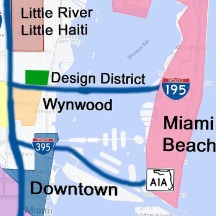This article is part of a ten-article series. See the full list of articles at the end of this one. The articles explore the issues Port of Harlem publisher Wayne Young uncovered and learned about while investing in his economically-challenged hometown, Gary, Indiana, and witnessing gentrification in once-economically challenged Washington, D.C.
The articles cover other places including South Bend, Indiana; Prince Georges County, Maryland; Washington, D.C.; Omaha, Nebraska; Flint, Michigan; Jackson, Mississippi; Florida, and the Lower Colorado River Basin States, specifically, California, Nevada, and Arizona.
Sargent, Edward, ed.
Climate change is already impacting how cities from Miami to Phoenix can, or cannot, grow. The impact of climate change has some planners believing that this could lead to more growth in rustbelt cities like Gary.
In Florida, flood insurance costs are already soaring after the Federal Emergency Management Agency (FEMA) changed the way it calculates flood insurance prices. In the most expensive ZIP code for flood insurance in South Florida, 33149, which covers Key Biscayne, the average premiums will rise above $7,000 a year reports WUSF.
With a cap placed by Congress that limit flood insurance premium increases to 18 percent per year for current homeowners, many Floridians expect yearly increases for many years . . .
With a cap placed by Congress that limit flood insurance premium increases to 18 percent per year for current homeowners, many Floridians expect yearly increases for many years until their premiums reach market rates. Since April 2022, new flood insurance buyers were not covered by the limits and are paying market rates immediately.
Florida Rising, a Florida affordable housing advocacy organization, warns that climate change is now another factor forcing lower income people from their homes in Miami’s underinvested neighborhoods of Little Haiti, Allapattah, and Liberty City. According to Dr. Harold Wanless, a geologist and Professor of Geography and Sustainable Development at University of Miami, by the year 2060, nearly 60% of Miami-Dade county will be underwater.
“Miami’s redlined districts are now a haven for climate gentrifiers with developers in Miami turning away from beachfront properties and heading for higher ground and further inland, “ they report. Formerly, underinvested areas such as Little Haiti are beginning to experience the building of luxury high-rises, driving up prices and pushing out long-time residents.
In 2016, Zillow predicted that one out of eight homes in Florida would be underwater by 2100, a loss of $413 billion in property.
Gershom Williams, Sr, who was raised in Gary’s Tarrytown neighborhood and now lives in Phoenix, says he remains hopeful that Arizona authorities will find a solution.
In Arizona, as groundwater supplies rapidly disappear, new housing developments are no longer getting grant certifications within Metro Phoenix. “This impact of climate change will prevent housing supply from catching up with demand," said Zillow Senior Economist Orphe Divounguy in AZBigMedia.
Gershom Williams, Sr, who was raised in Gary’s Tarrytown neighborhood and now lives in Phoenix, says he remains hopeful that authorities will find a solution. “We haven't been impacted just yet by the Arizona water shortage, but we've been hearing about it for several years.”
Climate change and population growth have increased pressure on the Colorado River, forcing Southwestern states to look for other sources of water. The Colorado River flows for approximately 1,450 miles and provides water to seven states: Colorado, New Mexico, Utah, Wyoming, Arizona, California, and Nevada.
In 2021, Nevada is the first state in the U.S. to ban ornamental grass. The ban affects residents in southern Nevada, does not apply to homes and parks, and begins in 2027. Officials estimate the region can save about 14 gallons of water per person per day by ripping out the ornamental grass.
Last year, California joined Allstate in deciding to halt sales of property and casualty coverage to new customers in The Golden State. The insurance companies say it's too pricey to underwrite policies in the state which has seen thousands of natural disasters in recent years.
RUST BELT CITIES PREPARE CLIMATE MIGRANTS
Jesse Keenan, Tulane University Associate Professor of Real Estate, thinks that frigid cities may eventually prove an appealing relocation destination for many Americans as climate change brings increasingly unbearable heat to already warm parts of the United States. “If you’re Florida … [the predictions] should be quite unnerving,” says Keenan, an expert in climate adaptation and design during a telephone interview with the Thomson Reuters Foundation.







